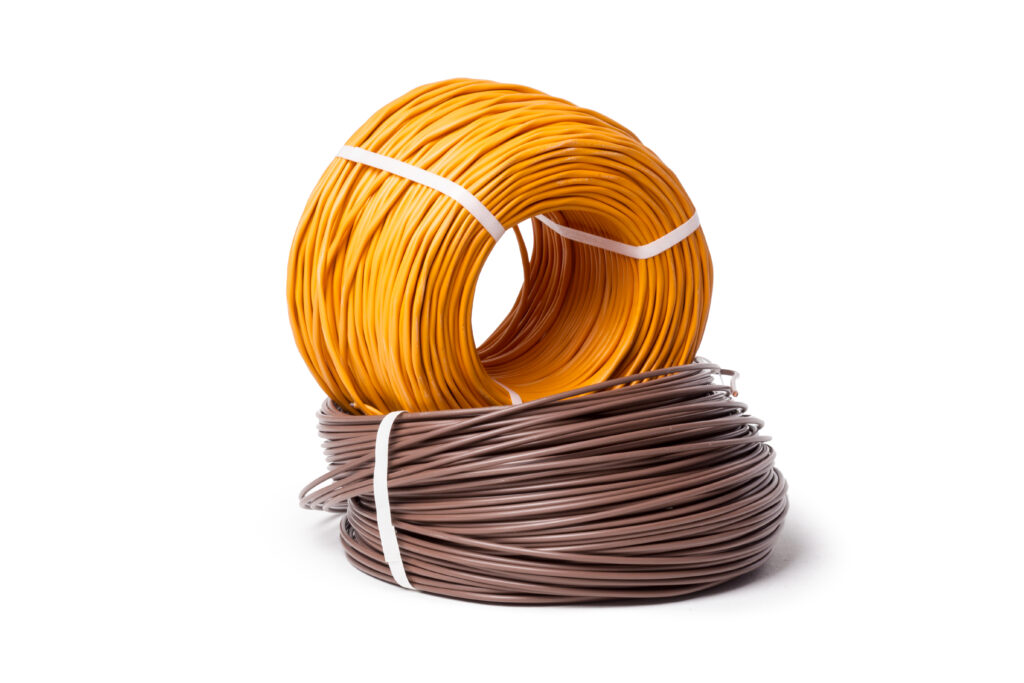
Apr 26 2024
/
Guide to Installing and Maintaining Copper Cables
For businesses of all sizes, a dependable and secure network often relies on the hidden infrastructure of copper cabling. With digital transformation and the increasing bandwidth needs of modern applications, maintaining your copper cables is crucial. But how do you install and upkeep these essential network components? We’ll cover best practices, tips, and considerations for copper cable installation and maintenance for an optimized network.
The Advantages of Copper Cabling
Before we plunge into the how-tos of copper cable installation, it’s worth noting why this medium is a frontline choice for many network professionals. Despite the increasing prevalence of fiber optics, copper still offers several unbeatable advantages:
Cost-Effective
Copper cables are budget-friendly, making them an attractive option for small to medium-sized enterprises with less expansive networking budgets.
Durability
Copper is a robust material, with an inherent ability to withstand the elements and physical stress, making it a reliable choice for critical network connections.
Familiar Technology
Copper has been a staple of networking for decades, and many IT professionals are already well-versed in its use and maintenance.
Wide Compatibility
Copper is the de facto standard for most networking equipment, ensuring compatibility across various devices and setups.
Best Practices for Copper Cable Installation
The quality of your network’s performance often hinges on the precision of your cabling installation. Poor planning and execution can result in signal loss, interference, and an overall subpar user experience. Here are critical best practices that can help you avoid these pitfalls:
1. Conduct a thorough analysis of the installation environment, considering temperature, moisture, and EMI, to ensure copper cable performance.
2. Use careful planning, and the right tools, and adhere to practices like cable dressing for stress minimization and maintaining bend radii.
3. Perform comprehensive continuity and signal quality tests with tools like TDRs to ensure cabling meets performance standards and to troubleshoot faults.
2. Use high-quality copper cabling and connectors to ensure maximum signal integrity.
1. Consider the category ratings of your cables (e.g., Cat5e, Cat6, etc.) to determine their suitability for your network’s data transfer needs.
2. Check for proper shielding and insulation on connectors and cables to minimize interference from external sources.
3. Use certified and reputable vendors for your cabling needs to ensure consistent quality and performance.
Copper Cable Maintenance: Regular Checks and Upkeep
Network maintenance is an ongoing task that includes regular checks of your copper cabling infrastructure. Neglecting maintenance can lead to unforeseen downtime and performance issues. Here’s how to keep your copper cables in top form:
1. Implement a Maintenance Schedule
- Develop a routine maintenance schedule with periodic checks for physical damage like cable kinks or crush spots.
- Update and document any changes to the cabling system for future reference.
2. Watch for Signs of Wear and Tear
- Conduct visual inspections regularly to identify wear signs like exposed wiring or damaged insulation.
- Promptly addressing these issues can prevent larger problems in the future.
3. Update and Upgrade as Necessary
- The digital landscape constantly changes, necessitating regular updates and upgrades to your copper cabling infrastructure.
- This ensures your network remains capable of handling the latest technologies and applications.
Copper Cable Troubleshooting Techniques
Even with top maintenance, copper cable issues can still occur. Learning to troubleshoot common problems helps quickly restore service and reduce impact on network users. Here are some common issues and tips to address them:
- Interference: Use shielded or braided cables and ensure proper grounding to minimize signal degradation from nearby power cables or equipment.
- Signal Loss: Address signal loss by not exceeding cable length limits, ensuring connectors are properly terminated, and using signal boosters or repeaters.
- Crosstalk: Reduce crosstalk by keeping cables properly separated, using twisted-pair cabling, and checking the cable management system’s integrity.
The Future of Copper Cables
As technology advances, it’s interesting to consider the future of copper cabling. Despite the rise of fiber optics and wireless solutions, copper is still a flexible and efficient option for networking. Innovations such as Power over Ethernet (PoE) and higher category cables (Cat 6a and beyond) are enhancing copper cabling’s performance, indicating its continued importance in networking.
- Demands for higher bandwidth are rising, leading to the development of new standards and technologies to enhance copper cable capabilities, supporting up to 10-gigabit connections.
- Proper installation and maintenance of copper cables remain crucial, regardless of advances in technology, to ensure smooth connections.
- Copper cabling is a sustainable option due to its longevity and recyclability, contributing to environmentally friendly networking practices with responsible use and disposal.
Conclusion
Copper cables are crucial for modern networking, and their proper installation and maintenance ensure a robust network. Knowing the best practices for copper cabling, maintaining a regular schedule, and learning troubleshooting techniques can keep your network at peak performance. With advancements in copper technology, this versatile medium remains essential for future connectivity.
Frequently Asked Questions
Can copper cables support 10 gigabit connections?
Yes, thanks to advancements in cable technology, copper cables can support up to 10 gigabit per second connections, suitable for high-speed networks.
What is the key to maintaining a robust copper network?
Proper installation and regular upkeep are key to a strong, reliable copper network. Following best practices and conducting routine checks are essential.
Why is copper considered a sustainable option for networking?
Copper is highly recyclable and durable, making it a long-lasting and sustainable choice for network infrastructures.
Are there any special considerations for installing copper cabling?
Following specific guidelines is crucial to avoid signal interference and damage. This includes observing the correct bend radius, steering clear of electrical interferences, and ensuring good grounding and shielding.
How often should copper network infrastructure be checked for maintenance?
Routine checks should be done at least annually, with more frequent reviews in environments prone to dust, vibrations, or other damaging factors. Regular maintenance is vital for preventing issues that could affect performance.
